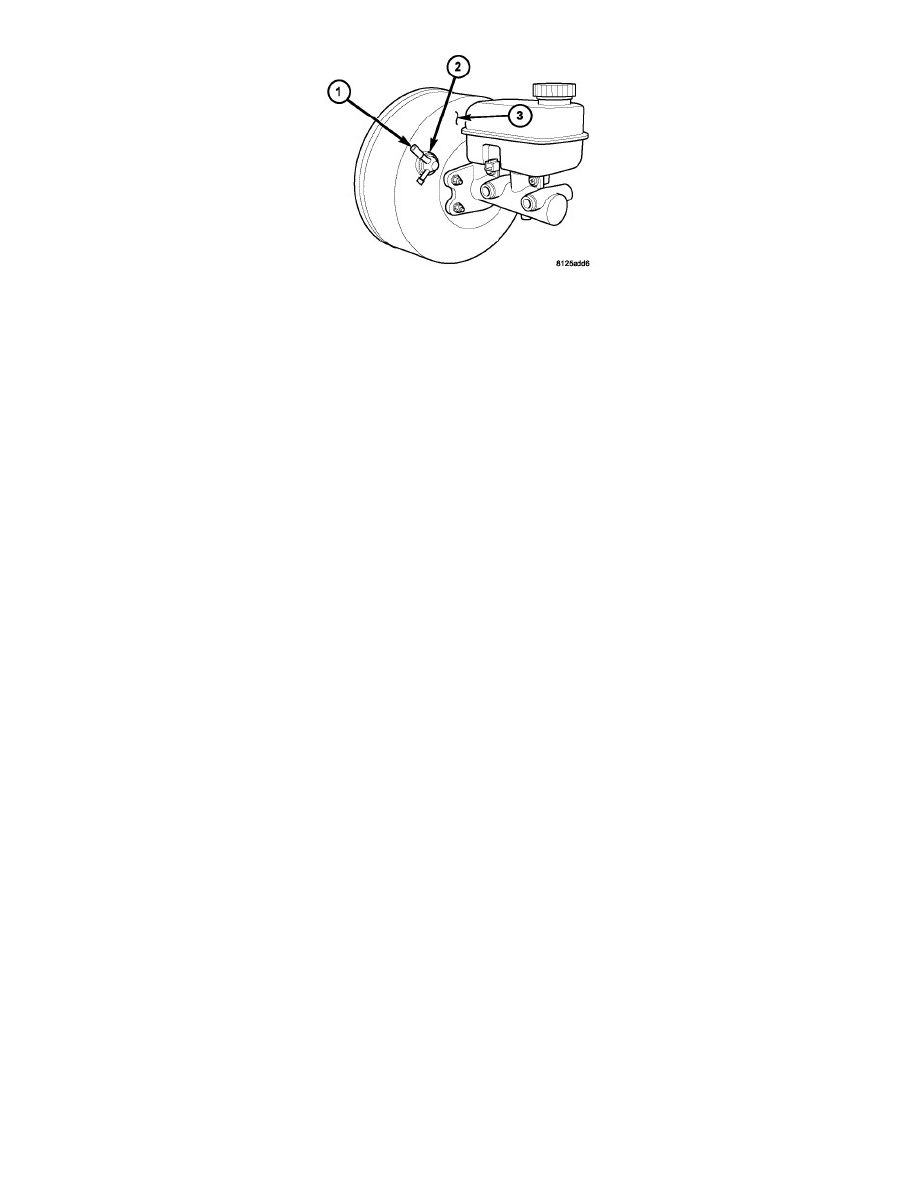Durango 2WD V6-3.7L (2009)

1. Disconnect vacuum hose from check valve (1).
2. Remove check valve (1) from booster (3).
3. Use a hand operated vacuum pump for test.
4. Apply 15-20 inches HG (508-677 millibars) vacuum at power booster end of check valve.
5. Plug off the small end (if present) to prevent vacuum leakage.
6. Vacuum should hold steady. If vacuum gauge indicates a vacuum loss, check valve is faulty and should be replaced.
POWER BOOSTER VACUUM TEST - HEV
1. Disconnect brake vacuum hose between booster and T-fitting and connect another T-fitting in-line.
2. Connect a vacuum gauge to the T-fitting installed in the previous step.
3. With the hood open, start and run engine at curb idle speed for one minute.
4. Observe the vacuum gauge. If vacuum supply is not above 12 inches HG (406 millibars), repair vacuum supply.
5. Clamp hose shut between T-fitting and engine manifold vacuum source.
6. Stop engine and observe vacuum gauge.
7. If vacuum drops more than one inch HG (33 millibars) within fifteen seconds, booster diaphragm, check valve or original T-fitting is faulty.
POWER BOOSTER CHECK VALVE TEST- HEV
NOTE: The vacuum line for the booster has a T-fitting with two integrated check valves, one on the engine manifold side, and one on the
Electric Vacuum Pump (EVP) side. If this T-fitting/check valves fail, replace only with proper T-fitting.
1. Disconnect the vacuum hose from the T-fitting on the booster side of T-fitting (side without check valve).
2. Connect a hand operated vacuum pump to the T-fitting.
3. Apply 15-20 inches HG (508-677 millibars) of vacuum. Vacuum should hold steady. If gauge on pump indicates vacuum loss, check valve in
T-fitting is faulty and T-fitting should be replaced
4. Remove check valve from booster.
5. Connect a hand operated vacuum pump at the power booster end of check valve.
6. Apply 15-20 inches HG (508-677 millibars) of vacuum.
7. Vacuum should hold steady. If gauge on pump indicates vacuum loss, booster check valve is faulty and should be replaced.
MASTER CYLINDER/POWER BOOSTER - HEV
NOTE: Perform the POWER BOOSTER VACUUM TEST - HEV and the POWER BOOSTER CHECK VALVE TEST- HEV before this
test. DTCs will set when performing this test.
